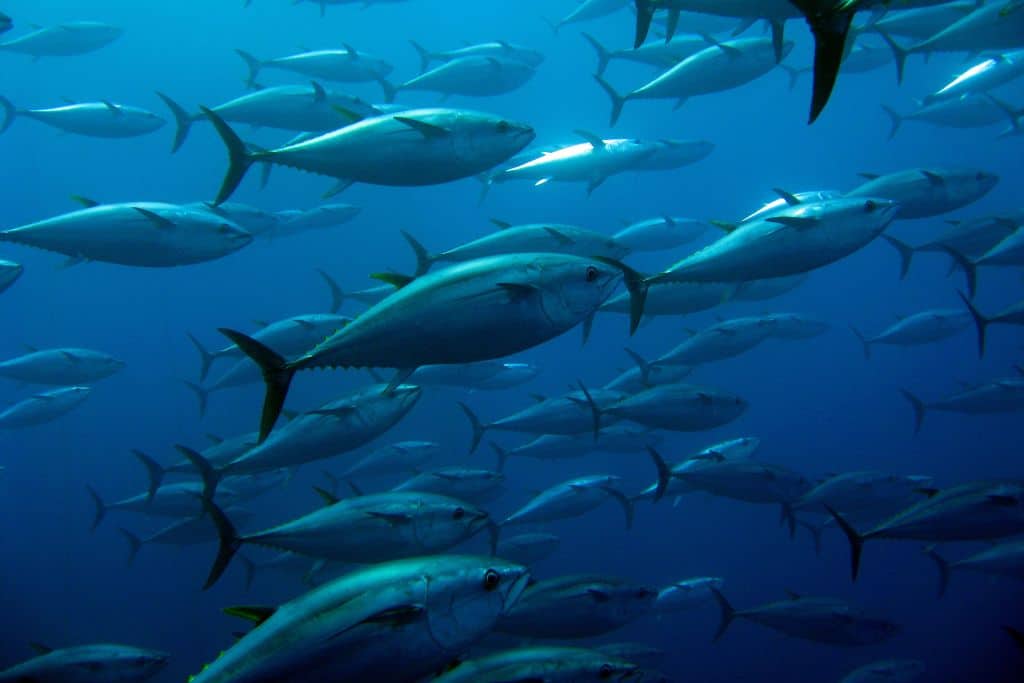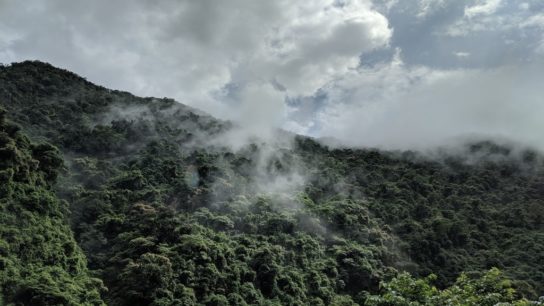Climate change is steering Pacific tuna fisheries in another direction, leading them toward targeted areas for future deep-sea mining projects and threatening their livelihoods, according to a newly published report.
—
Climate change will drive an increasing overlap between Pacific tuna fisheries and the deep-sea mining industry, leading to severe disruptions in the marine ecosystem, new research has suggested.
Scientists behind the new study published Tuesday in Nature used climate models to investigate the effects of climate change on tuna fisheries and the emerging deep-sea mining industry. They concluded that tuna distributions will increase in the Clarion-Clipperton Zone of the Pacific Ocean in the following decades. More specifically, the researchers discovered projected percentage increases in population for bigeyes (10-11%), skipjacks (30-31%), and yellowfins (23%).
The Clarion-Clipperton Zone (CCZ) of the Pacific Ocean is situated between Mexico and Hawaii, containing 1.1 million square kilometres (424,712 sq miles) of deep-sea mining exploration contracts. It houses trillions of potato-shaped rocks, also known as polymetallic nodules, that contain minerals including nickel, cobalt, and manganese. The nodules are rich in value as they are an amalgamation of rare earth metals formed by a biochemical process spanning millions of years.
Since it is a hotspot for valuable metals, numerous companies are eyeing the region for deep-sea mining. Mining companies want to send robots underwater to suck up the area’s polymetallic nodules, generating sediment plumes that could spread to ten to thousands of kilometres. These plumes could hinder visual communication, toxic metals could be ingested by surrounding marine life, and noise and light pollution from construction activities could severely disrupt the marine environment and yield stress for its inhabitants.
Removing the nodules could produce long-lasting damage. A 2018 study found that an individual exploration contract for nodules could occupy a region the size of Austria or Tasmania, and removing them could have impacts on about 30% of the area for a 20- to 30-year period.
Ironically, these nodules are essential for environmentally-friendly technologies that push the global energy transition to green technology, such as producing batteries for electric vehicles.
CEO of The Metals Company Gerard Barron is advocating for the extraction of metals in the CCZ, believing that mining the ocean is less perilous than “ripping out more rainforests.”
On the contrary, scientists and environmentalists insist that mining activities will only bring more harm than good to the environment, fearing that the extraction of metals is simply a “gold rush” portrayed as environmental activism.
The eruption of this heated debate comes after the expiration of a two-year consideration period for a controversial application made by the Pacific Island of Nauru to the International Seabed Authority (ISA) in July 2021. The island requested the first-ever commercial license for deep-sea mining, causing the ISA to put a two-year pause to consider the application.
It also comes at a pivotal moment for the future of deep-sea mining, as 168 global representatives gathered in Jamaica’s capital Kingston on Monday for the ISA’s meeting to discuss Nauru’s two-year-old request of mining its metals immersed in its ocean floors. The conference will extend until July 28.
Environmental advocates and scientists hope the discussion will conclude with protecting ocean floors, preventing anyone from inflicting harm on the already fragile environment. However, there are several influential pro-mining countries, such as China, Russia and South Korea could stand in the way, believing that sea extraction is the future for the tech industry.
You might also like: The Detrimental Effects of Deep-Sea Mining on Marine Ecosystems














